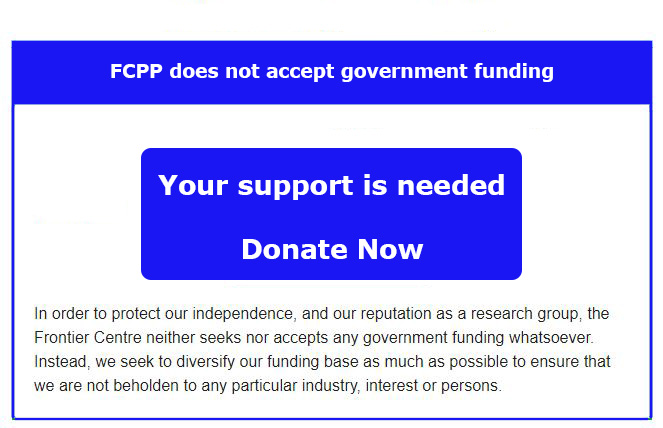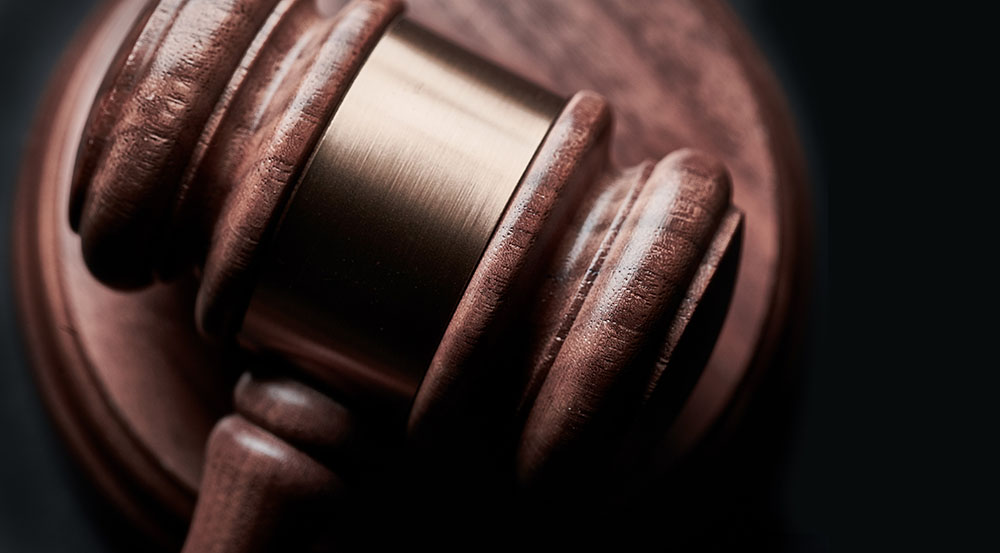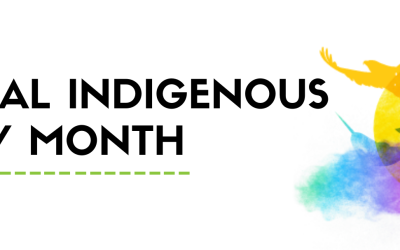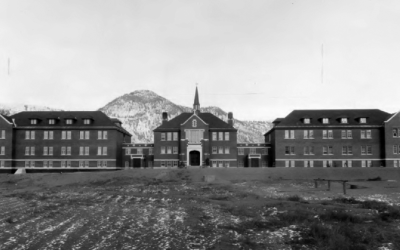It’s a mystery why some people suddenly eschew their past principles. This phenomenon is especially notable when people of power and fame forget principles they have sworn to uphold as responsible professionals.
This mystery is evident in Senator Murray Sinclair’s work on the TRC Report.
The Summary volume of the Truth and Reconciliation Report1 was released when he was still a Judge. This volume is a masterwork of omission, hyperbole, bad history, crude attacks on various Canadian governments, and unjustified attacks against Churches.
Yet Justice Sinclair’s working life before the TRC had been very successful as he moved into the upper social and professional echelons of Canadian society, receiving full benefits and privileges from governments and from both Indigenous and non-Indigenous citizens. In fact, his life was an object lesson that race, particularly Indigeneity, is not a barrier to achieving success in Canada while still retaining one’s Indigenous heritage.
Raised on the St. Peter’s Indian Reserve (First Nation) north of Winnipeg, he had a stellar high school career, graduating from a public high school as class valedictorian in 1968, and being selected as the male athlete of the year. He was the Executive Assistant to Manitoba’s Attorney General, Howard Pawley in the early 1970s. He started practising law in 1980 and spent only eight years as a practising lawyer before being appointed a Judge of the Provincial Court of Manitoba. In 2001 he was elevated to the Manitoba Court of Queen’s Bench where he served until 2009 when he agreed to Chair the Truth and Reconciliation Commission.
As a courtroom lawyer and a long-serving Judge, Senator Sinclair paid critical attention to the ethical principles that bind those who participate in the administration of justice in Canada. As a lawyer, he followed the Law Society of Manitoba’s ethical requirement2 to treat clients with candour and fairness, “in a way that promotes the parties’ right to a fair hearing in which justice can be done.” While making representations to tribunals he was ethically responsible to when the opposing party was not in Court, and “where the full proof and argument inherent in the adversarial system cannot be achieved…take particular care to be accurate, candid and comprehensive in presenting the client’s case so as to ensure that the tribunal is not misled.” In civil court situations, where the opposing party is not in Court, lawyers must present the other side’s version of events as well as his or her side. Failing to adhere to this principle can bring about severe sanctions on a lawyer and harm the interests of his client.
As a lawyer, Senator Sinclair practised the ethical requirements not to “misstate facts or law,” make “irresponsible allegations,” or “suppress what ought to be disclosed.” He never would have “deliberately refrain[ed] from informing a judge or tribunal of any binding authority that, as a lawyer, he considers to be directly on point and that has not been mentioned by an opponent,” because he knew that, “in the eyes of the public, professional knowledge lends weight to the lawyer’s judgements or criticism.”
These ethical principles are seared into the psyche of all trial lawyers and judges and remain with them forever. When Murray Sinclair was elevated to the Bench, these principles remained a central part of the decisions he made. As a judge, three other principles became second nature to him: First, “hear both sides” of every case. Second, when deciding a case give full reasons so that the losing party understands why he or she lost. Third, Murray Sinclair would know that “a Judge who uses the privileged platform of judicial office to enter the political arena puts at risk public confidence in the impartiality and independence of the judiciary.”3 These principles are fundamental to the maintenance of public faith in the administration of justice, and this non-partisan, sober, objective, fact-based “judiciousness” is required for the rule of law to be maintained.
This is the mantle of public influence that Judge Sinclair wore when he released the Summary volume of the TRC Report. His status as a judge would give high apparent credibility to the report.
I say “apparent” because Judge Sinclair had inexplicably eschewed these ethical principles in favour of writing a partisan report, eschewing the search for truth in favour of becoming a spokesman for a political cause. While trading on being a lawyer and a judge, he forgot the ethical principles he swore to uphold, leaving an unbalanced and false impression of the experiences of children in Indian residential schools.
The Summary is the first of the six volumes in the 3500-page report, and it is the only volume that most people would likely read. In this volume, Judge Sinclair boldly and falsely asserts that Indian residential schools engaged in “cultural genocide” against Indigenous children, that the administrators, teachers, and other employees were most likely child abusers, and that any Indigenous person who attended a school should be known as a “Survivor.”4
Even before the TRC Report was published, Senator Sinclair knew that he was not revealing the full picture. In 2010, he wrote a relatively balanced opinion article in the Calgary Herald in which he stated:
While the TRC heard many experiences of unspeakable abuse, we have been heartened by testimonies which affirm the dedication and compassion of committed educators who sought to nurture the children in their care. These experiences must also be heard.5
Surprisingly, there is no hint of this positive thought in the Summary volume of the report.
Nevertheless, buried deep in volume 4, Missing Children and Unmarked Burials is evidence of the positive experiences of many students:
Many students had positive memories of their experiences of residential schools and acknowledge the skills they acquired, the beneficial aspects of the recreational land sporting activities in which they engaged, and the friendships they made. Some students went to public schools so that they could graduate and attend post-secondary institutions and develop distinguished careers.6
In another volume, The Survivors Speak, there is a chapter entitled “Warm Memories” containing numerous positive recollections of people who were clearly not residential school “Survivors,” but residential school “Thrivers.”7 Again, there’s not a hint of these unequivocally positive and relevant stories in the Summary volume.
There is, however, a reference to the Northern Ontario Spanish residential school in the Summary, but there is no reference to the famous book about that school, Indian School Days, by Basil Johnston.8 Johnston writes a positive account of his experiences at the school, and he went on to become a high school teacher and an ethnologist with the Royal Ontario Museum. He gave a “qualified yes” to the question: “Is there a place for residential schools in the educational system?” It is wrong that the TRC Report omitted reference to this balanced and authoritative account of the Spanish residential school?
Retired Supreme Court of Canada Justice Jack Major was a friend of Basil Johnston and knew the Spanish residential school quite well. He regards it, based on his personal experience, as having been a generally positive place for the students who went there. He says that the notion that pupils were torn from happy homes is a myth. He remembers that a lot of students there were rescued from starving on trap lines and many had tuberculosis and they received special care for this disease. He wrote to me that it’s true that English was paramount, “but how else to equip students to function off the reserve?” Justice Major further emailed me to say: “It is strange that native spokesmen are reluctant to tout any success in the modern world of pupils of residential schools…I suppose the silence reflects the motives of the vocal elements and misguided followers.”9
After the release of the Summary Report in 2015, the renowned Cree residential school Thriver, novelist, playwright, classical pianist, and Order of Canada recipient Tomson Highway, publicly said that:
All we hear is the negative stuff, nobody’s interested in the positive, the joy in that school…You may have heard stories from 7000 witnesses that were negative. But what you haven’t heard are the 7000 stories that were positive… I have a thriving international career, and it wouldn’t have happened without that school.10
This did not deter Murray Sinclair from perpetuating the narrow, rigid “genocidal trauma” narrative of residential schools laid out in the TRC Summary volume even though he was bound by the principle that, “A Senator shall uphold the highest standards of dignity inherent to the position of Senator.”11
In 2017 Senator Lynn Beyak from Dryden, Ontario, publicly said that some good things happened in residential schools and that many of the teachers and administrators were well-intentioned. For saying what Basil Johnson, Tomson Highway, and a number of other people said in the “Warm Memories” chapter, Senator Sinclair called her a “denier,” “delusional,” and suggested that she was “slow-witted” or “dim-witted.”12 For this apostasy, he led a campaign to have her debarred from the Senate.
All of this conduct on the part of Judge and then Senator Sinclair was in violation of the judicial precepts that ought to have guided, and ought to still be guiding, what he says about residential schools in Canada. By failing to present “the other side of the story” in the Summary volume, he misled the great “tribunal” that is the Canadian people. By downplaying the “warm memories” of many school attendees and by ignoring facts that didn’t fit his narrative of “cultural genocide,” he violated the principle of “hear both sides” and “give full reasons to the losing side” dicta that bind lawyers and judges. By engaging in ad hominem attacks on mild dissenters like Senator Beyak, he has failed to act with judicious decorum and restraint.
Judge Sinclair became the TRC Chairman because he was a judge. As such, he owed it to Canadian people, both Indigenous and non-Indigenous, as well as to the administration of justice to make sure the TRC Report was a balanced and judicious report. He failed to do this, and for this reason, he misused his influence, and Canada is worse off for it.13
Peter Best has practised law in Sudbury for the past 45 years. He is the author of There Is No Difference: An Argument for the Abolition of the Indian Reserve System, (thereisnodifference.ca) which has been endorsed by retired Supreme Court of Canada Justice Jack Major.
[show_more more=”SeeEndnotes” less=”Close Endnotes”]
- Final Report- Truth and Reconciliation Commission of Canada (Toronto, ON: James Lorimer, 2015).
- Law Society of Manitoba Code of Professional Conduct which can be found on Law Society’s website: https://lawsociety.mb.ca/regulation/act-rules-code/code-of-professional-conduct/.
- Canadian Judicial Council, Ethical Principles for Judges, section D.1.This document is online at: https://cjc-ccm.ca/cmslib/general/news_pub_judicialconduct_Principles_en.pdf.
- To the extent that anyone who attended one of these schools went on to become a success in life, which the Summary acknowledges, was only because they were “resilient, courageous Survivors” who succeeded “despite their traumatic childhood experiences.”
- Murray Sinclair, “Many threads are woven into the fabric of truth,” Calgary Herald, August 5, 2010.
- Truth and Reconciliation Commission of Canada, Missing Children and Unmarked Burials, Vol. 4, (Montreal, PQ: McGill-Queen’s University Press), ix.
- Truth and Reconciliation Commission of Canada, The Survivors Speak (Montreal, PQ: McGill-Queen’s University Press), 185-189.
- Basil H. Johnston, Indian School Days, (Norman, OK: University of Oklahoma Press, 1988), 12.
- Email to writer dated July 17th, 2019. The full quotation is reported in Peter Best, There Is No Difference, An Argument for the Abolition of the Indian Reserve System (Victoria, BC: Telwell Press, 2020), 648.
- Full quotation is reported in Peter Best, There Is No Difference, 649.
- Senate of Canada, Ethics and Conflict of Interest Code for Senators, section 4, which is available online at: http://sen.parl.gc.ca/seo-cse/eng/Code-e.html.
- Senator Sinclair’s partisan, injudicious attack on Senator Beyak was just the beginning. Since then, he has attacked anyone who disagrees with him on any Aboriginal-related issue as being either ignorant or a racist. Recently, Manitoba’s Premier Brian Pallister complained that the federal government was planning to treat Aboriginals in Manitoba preferentially over non-Aboriginals in the distribution of a Covid-19 vaccine, Senator Sinclair wrote that Premier Pallister was playing “the race card”, was “blind to his own racism”, and that “Canada and the provinces have waged war against Indigenous people through law for generations. You’re just part of the current “race war,” Mr. Premier, and-sadly-one of its leaders.” I wonder if his former colleagues on the Manitoba Bench recognize the intemperate partisan he has become. See Murray Sinclair, Premier seeks to divide province with incendiary comments on vaccine, First Nations: Sinclair, cbc.ca/news, December 5th, 2020.
- Senator Murry Sinclair responds to Lynn Beyak’s defence of residential schools, cbc.ca/news, March 29, 2017.
[/show_more]
Photo by Bill Oxford on Unsplash.



